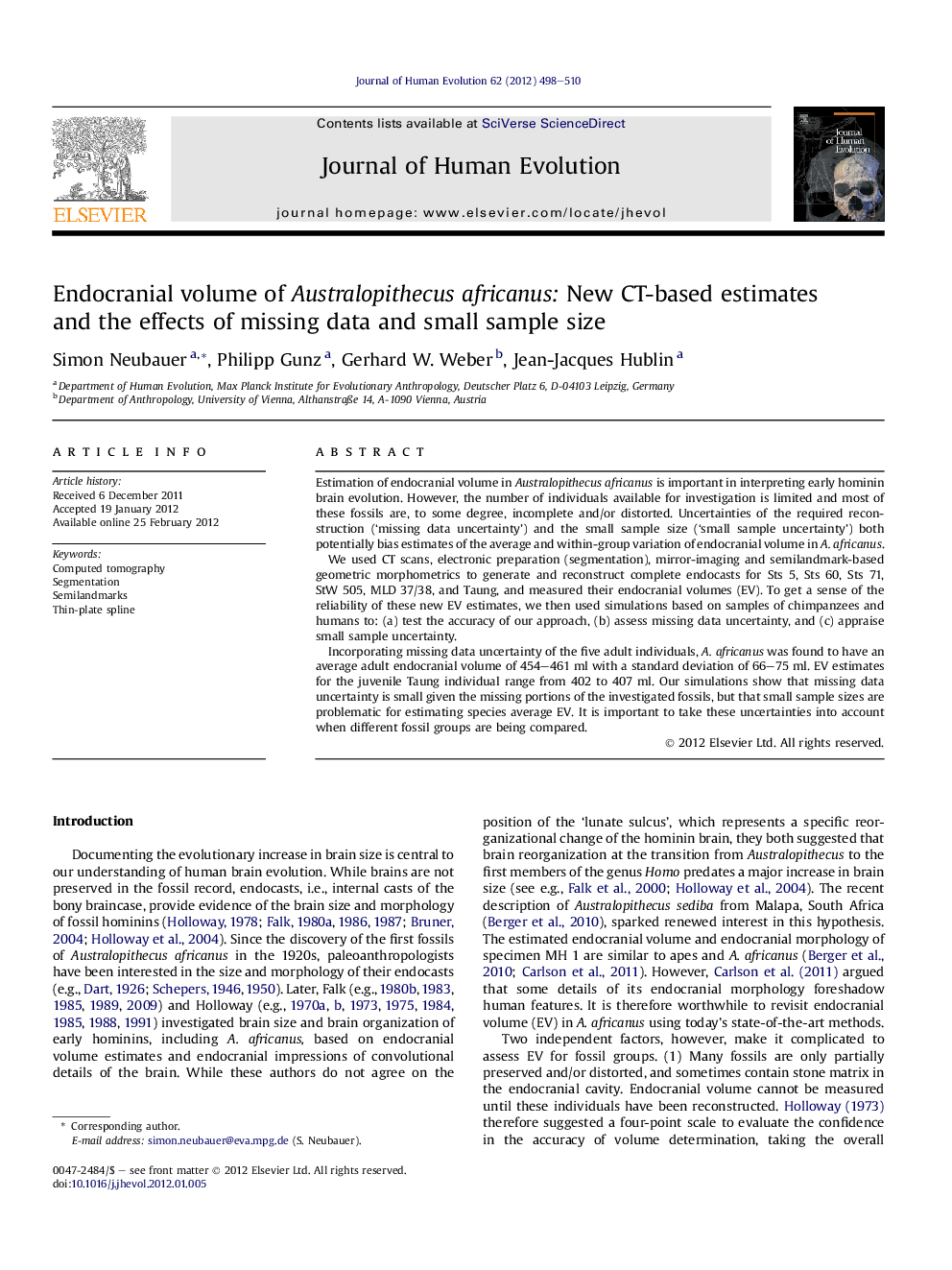| Article ID | Journal | Published Year | Pages | File Type |
|---|---|---|---|---|
| 4556411 | Journal of Human Evolution | 2012 | 13 Pages |
Estimation of endocranial volume in Australopithecus africanus is important in interpreting early hominin brain evolution. However, the number of individuals available for investigation is limited and most of these fossils are, to some degree, incomplete and/or distorted. Uncertainties of the required reconstruction (‘missing data uncertainty’) and the small sample size (‘small sample uncertainty’) both potentially bias estimates of the average and within-group variation of endocranial volume in A. africanus.We used CT scans, electronic preparation (segmentation), mirror-imaging and semilandmark-based geometric morphometrics to generate and reconstruct complete endocasts for Sts 5, Sts 60, Sts 71, StW 505, MLD 37/38, and Taung, and measured their endocranial volumes (EV). To get a sense of the reliability of these new EV estimates, we then used simulations based on samples of chimpanzees and humans to: (a) test the accuracy of our approach, (b) assess missing data uncertainty, and (c) appraise small sample uncertainty.Incorporating missing data uncertainty of the five adult individuals, A. africanus was found to have an average adult endocranial volume of 454–461 ml with a standard deviation of 66–75 ml. EV estimates for the juvenile Taung individual range from 402 to 407 ml. Our simulations show that missing data uncertainty is small given the missing portions of the investigated fossils, but that small sample sizes are problematic for estimating species average EV. It is important to take these uncertainties into account when different fossil groups are being compared.
